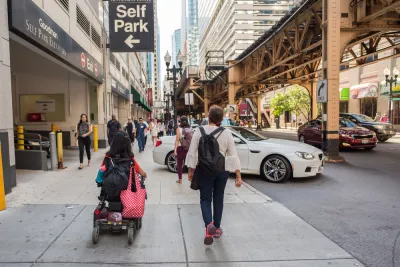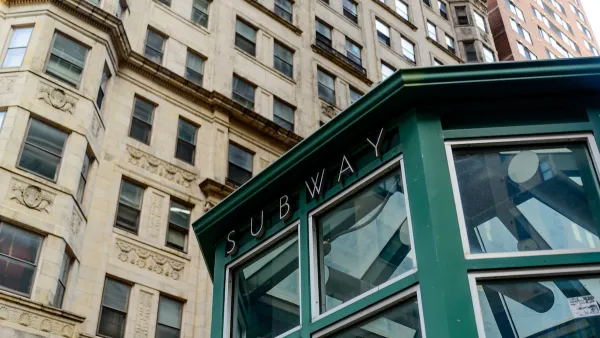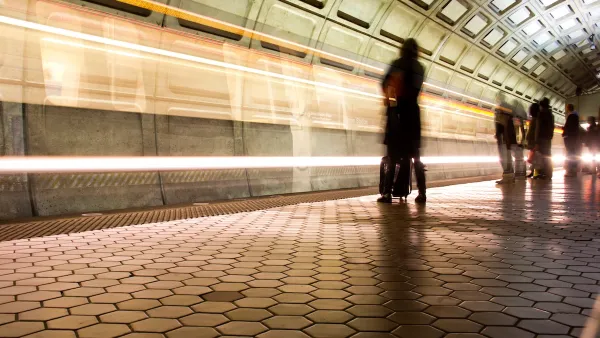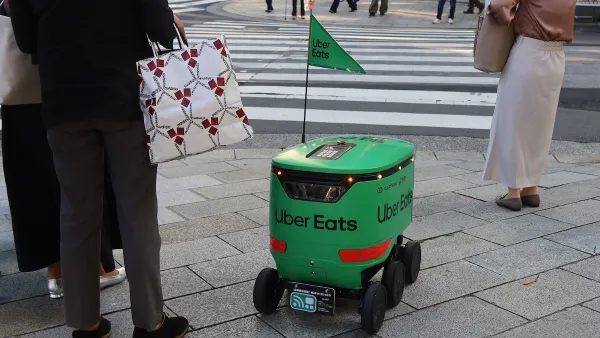Inadequate infrastructure disproportionately harms people with mobility challenges who can't or don't drive, but their needs closely mirror those of all pedestrians.

A study from Disability Rights Washington that interviewed people with mobility challenges "found that respondents 'overwhelmingly' cited 'the poor condition or absence of sidewalks' as the biggest barrier to getting where they needed to go, followed closely by problems with curb cuts, crosswalks and intersections." Kea Wilson writes that the requests made by the study's respondents "closely resemble the demands of sustainable transportation advocates on the whole." These include "[f]requent and reliable fixed-route transit; zoning changes to make a range of accessible housing options abundant in well-connected neighborhoods; and a revamped planning processes to center the needs of non-drivers."
While the cost of poor infrastructure is disproportionately high for people with mobility challenges, "insufficient infrastructure" harms more than just people with disabilities. "Focusing on non-drivers also allows us to advocate for better transportation access for people who may not be disabled, but who would benefit from better transit and active transportation infrastructure," says Anna Zivarts, director of the Disability Mobility Initiative and a lead author of the report. "Engaging deeply with the experiences of people with disabilities like the ones catalogued in this report is a good starting point for agencies who want to do better by all their residents. But the report authors stress that action is what matters."
The report outlines some key recommendations, including more robust pedestrian networks, more accessible and reliable public transit, incentives for accessible housing near transit and dense urban areas, and legal requirements for inclusion and access.
FULL STORY: Why We Can’t Afford to Ignore the Needs of Non-Drivers With Disabilities

National Parks Layoffs Will Cause Communities to Lose Billions
Thousands of essential park workers were laid off this week, just before the busy spring break season.

Retro-silient?: America’s First “Eco-burb,” The Woodlands Turns 50
A master-planned community north of Houston offers lessons on green infrastructure and resilient design, but falls short of its founder’s lofty affordability and walkability goals.

Delivering for America Plan Will Downgrade Mail Service in at Least 49.5 Percent of Zip Codes
Republican and Democrat lawmakers criticize the plan for its disproportionate negative impact on rural communities.

Test News Post 1
This is a summary

Test News Headline 46
Test for the image on the front page.

Balancing Bombs and Butterflies: How the National Guard Protects a Rare Species
The National Guard at Fort Indiantown Gap uses GIS technology and land management strategies to balance military training with conservation efforts, ensuring the survival of the rare eastern regal fritillary butterfly.
Urban Design for Planners 1: Software Tools
This six-course series explores essential urban design concepts using open source software and equips planners with the tools they need to participate fully in the urban design process.
Planning for Universal Design
Learn the tools for implementing Universal Design in planning regulations.
EMC Planning Group, Inc.
Planetizen
Planetizen
Mpact (formerly Rail~Volution)
Great Falls Development Authority, Inc.
HUDs Office of Policy Development and Research
NYU Wagner Graduate School of Public Service





























